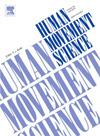机器人辅助步态训练对慢性偏瘫患者躯干对称性改善的影响:一项随机、单盲临床试验
IF 1.9
3区 心理学
Q4 NEUROSCIENCES
引用次数: 0
摘要
中风引起的步态障碍常导致躯干排列不对称,影响患者的活动能力和生活质量。这项随机、单盲临床试验研究了机器人辅助步态训练在解决这一问题方面的效果,并探讨了其对下肢功能的影响。方法50例慢性脑卒中患者,一组接受传统康复治疗,另一组接受机器人辅助步态训练。机器人辅助步态训练(RAGT)组的参与者在传统康复治疗的基础上进行30分钟的训练,每周三次,共12次,持续4周。所有参与者都进行了干预前评估,并在干预后2周和4周进行了重新评估。我们评估了躯干对称性和步态参数,包括步长、步长、分离线和足力,以及膝关节伸肌力量和刚度。结果:RAGT组躯干对称性显著改善(F(2,46) = 35.52, p <;0.001, η2 = 0.607)。两组患者步长不对称性变化均显著(p <;0.000每个)没有组间差异,而瘫痪膝伸肌力量在RAGT组有更大的改善(p <;0.001)。研究结果显示,接受RAGT治疗的患者躯干对称性和肌肉力量有显著改善。这些结果强调了RAGT在脑卒中康复中的重要作用。因此,适当的步态模式可能有助于保持健康的姿势。本文章由计算机程序翻译,如有差异,请以英文原文为准。
Effects of robot-assisted gait training on trunk symmetry improvement in patients with chronic hemiplegia: A randomized, single-blind clinical trial
Background
Stroke-induced gait impairments often result in asymmetrical trunk alignment, affecting mobility and quality of life of patients. This randomized, single-blind clinical trial investigated the efficacy of robot-assisted gait training in addressing this issue and explored its impact on lower limb functions.
Methods
Fifty patients with chronic stroke were included in this study, with one group receiving traditional rehabilitation therapy and the other receiving additional robot-assisted gait training session. Participants in the robot-assisted gait training (RAGT) group underwent 30-min session, thrice per week for 4 weeks, totaling 12 sessions, in addition to traditional rehabilitation therapy. All participants underwent preintervention assessments, with reassessments at 2 and 4 weeks after the intervention. We assessed trunk symmetry and gait parameters, including step time, step length, separation line, and foot force, along with knee joint extensor muscle strength and stiffness.
Findings
Significant improvements in trunk symmetry were observed in the RAGT group (F(2,46) = 35.52, p < 0.001, η2 = 0.607). Changes in step length asymmetry were significant for both groups (p < 0.000 each) without intergroup differences, whereas paralyzed knee extensor strength showed greater improvement in the RAGT group (p < 0.001).
Interpretation
The study findings revealed significant improvements in trunk symmetry and muscle strength among patients receiving RAGT. These results underscore the promising role of RAGT in stroke rehabilitation. Thus, proper gait patterns may contribute to maintaining a healthy posture.
求助全文
通过发布文献求助,成功后即可免费获取论文全文。
去求助
来源期刊

Human Movement Science
医学-神经科学
CiteScore
3.80
自引率
4.80%
发文量
89
审稿时长
42 days
期刊介绍:
Human Movement Science provides a medium for publishing disciplinary and multidisciplinary studies on human movement. It brings together psychological, biomechanical and neurophysiological research on the control, organization and learning of human movement, including the perceptual support of movement. The overarching goal of the journal is to publish articles that help advance theoretical understanding of the control and organization of human movement, as well as changes therein as a function of development, learning and rehabilitation. The nature of the research reported may vary from fundamental theoretical or empirical studies to more applied studies in the fields of, for example, sport, dance and rehabilitation with the proviso that all studies have a distinct theoretical bearing. Also, reviews and meta-studies advancing the understanding of human movement are welcome.
These aims and scope imply that purely descriptive studies are not acceptable, while methodological articles are only acceptable if the methodology in question opens up new vistas in understanding the control and organization of human movement. The same holds for articles on exercise physiology, which in general are not supported, unless they speak to the control and organization of human movement. In general, it is required that the theoretical message of articles published in Human Movement Science is, to a certain extent, innovative and not dismissible as just "more of the same."
 求助内容:
求助内容: 应助结果提醒方式:
应助结果提醒方式:


